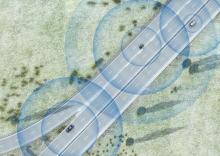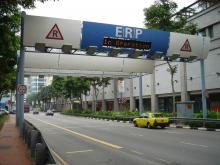Jason Barnes reports from the ASECAP Days 2013 event, which took place in Dubrovnik. ASECAP, the European tolling association held its 41st annual Study and Information Days event in Dubrovnik, Croatia, which attracted more than 200 figures from the road infrastructure sector in Europe and beyond. A series of presentations over two days brought attendees up to date with developments in a variety of policy and technology fields and discussed a number of developing and new topics, such as GNSS-based tolling a

Emanuela Stocchi
Jason Barnes reports from the ASECAP Days 2013 event, which took place in Dubrovnik.
Joint declaration
A significant milestone, and one which occurred very early in the event’s proceedings, was the signing of a joint declaration on tolling with its US-based counterpart IBTTA (theThe joint declaration calls for an increase in advocacy and application of tolling policies to support infrastructure funding around the globe. It builds, says Stocchi, on a Memorandum of Understanding (MoU) signed between ASECAP and IBTTA in Villanova in 2004 and is in many ways the instrument which will actually implement the earlier document’s intent.
“ASCECAP and IBTTA already cooperate closely in areas of common interest and engage regularly in information exchange. The two associations’ presidents regularly attend each other’s events and there are a lot of board members common to both,” she continues.
“The joint declaration coincides with the launch of IBTTA’s new communications campaign, Moving America Forward, which will look to highlight the benefits of tolling as a sustainable and equitable means of infrastructure provision into the future, and allows us greater mass as we look to take forward what we have in common.”
The joint declaration highlights the ability of tolling to fill the gaps left by the continuing reduction of government funding. It goes on to highlight the tolling industry’s potential contribution to congestion management as well as the business and job opportunities, both directly and in the wider economy, that well-financed and managed road transport infrastructure can provide. Dubrovnik was chosen as the venue for the signing as it was the first joint meeting of ASECAP and IBTTA this year. The declaration is targeted at government institutions, including the
“At a practical level it provides a good basis on which concessionaires can base their own public information campaigns,” Stocchi adds. “It provides common messages to be used up and down the scale.”
Highlighting the close and ongoing cooperation with IBTTA, ASECAP’s general secretary Kallistratos Dionelis notes that the joint declaration gives the two organisations the basis from which to take further steps, such as the possible production of joint publications on specific topics.
Pat Jones, IBTTA’s executive director and CEO, says the document as an example of how the organisations continue to grow together. However, he notes that there remains regional and other emphases of focus distinct to both IBTTA and ASECAP.
European policy development
ASECAP has long involved itself in the definition and development of technology solutions intended to benefit both its members and their customers. An example is CESARE, a four-phase series of projects co-funded by the EC designed to specify, design, develop, promote and implement a common interoperable Electronic Fee Collection (EFC) system on European toll roads. CESARE ran for over a decade and CESARE IV was to define, according to the European Directive 2004/52, a framework for establishing an interoperable European Electronic Toll Service (EETS) which would function in a coordinated way to allowWith the realisation of EETS having slipped, Christos Economou from
Notwithstanding EETS’s continued troubled progress, ASECAP has a tradition of cooperating with institutions like the EC to help determine the future face of tolling. Currently, this extends to involvement in work to determine the viability of technology based on a global navigational satellite system (GNSS). There is great political interest in the use of GNSS for tolling in Europe, with the roll-out of the EU’s Galileo satellite navigation and positioning system.
However, with the established and well-understood dedicated short range communication (DSRC) technology already used for tolling applications across Europe, any shift away would represent a major change. Fiammetta Diani of the GSA (the
The two will work to understand how European GNSS technology can add value to road infrastructure operators and identify actions to capture this value, however this should not necessarily be taken to presage a sea change, says Dionelis.
“It’s important to stress that the cooperation of ASECAP with the EC/GSA does not necessarily reflect a move to embrace GNSS-based tolling technologies but to assess what conditions are essential for its successful deployment parallel to other existing technologies, basically DSRC,” he explains. “The GSA will obviously quite readily find use cases for satellite technology but ASECAP is not yet convinced of the added value it brings to the motorway tolling world and, more specifically, how to deploy it in the real tolling industry. That’s not to say that the added value doesn’t exist, nor that the technology cannot be deployed; it’s just that in the context of tolling concessionaires there remain a lot of open questions that could be summarised in the term ‘cost benefit’.
“We need to address those questions from a position without preconceptions and reach mutual agreement on the relative strengths of GNSS and DSRC-based technologies. Right now, the work in progress is purely at a technical level. The most concrete move to date has been the recent setting up of an ASECAP/GSA technical task force, whose work kicked off formally after the Dubrovnik gathering.”
Cooperative ITS and smart devices
New technology played a heavy part in the proceedings in Dubrovnik. Another area on which tolling concessionaires are keen to keep a watching brief is Cooperative ITS (C-ITS) infrastructures. Vehicle-to-vehicle and vehicle-to-infrastructure solutions have benefited from significant public- and private-sector investment in recent years. Many of these now stand ready to be used in the real world however the ‘who, what, why, when and where’ is still the subject of discussion and development. Although toll concessionaires may not necessarily be day one implementers, they still need to have a significant say in the form and timings of deployments and Marko Jandrisits from Austrian tolling associationAnother encroaching technology comes in the form of the consumer electronic device, in the form of the smartphone. Even just a few years ago, the idea of using such a device to replace the traditional tolling onboard unit would have been strongly rejected by tolling industry experts. Resistance, in terms of concern over secure and reliable performance, still remains and research projects are been going on around the world. Rafael Fando of toll operator
Such solutions remain experimental at present but we must be better be better prepared for their potential use, says Dionelis.
“From a concessionaire’s point of view the toll charger would have to rely on every third party he cooperates with – a very delicate matter which needs caution. Toll chargers need guarantees that they’ll receive all revenues. Even small margins of error within a system can have big effects – and this is the big issue in the tolling environment.”
Dionelis also notes the importance of being open minded and ensuring a smooth transition with any new technology that may be deployed.
New appointments
In Dubrovnik, Jean Mesqui of ASFA took over from ASFiNAG’s Klaus Schierhackl as ASECAP president for the coming year. Norvegfinans’ Øyvind Halleraker became first vice president with AISCAT’s Massimo Schintu as second vice president.A full set of the proceedings of the 2013 event can be found on the ASECAP %$Linker:










